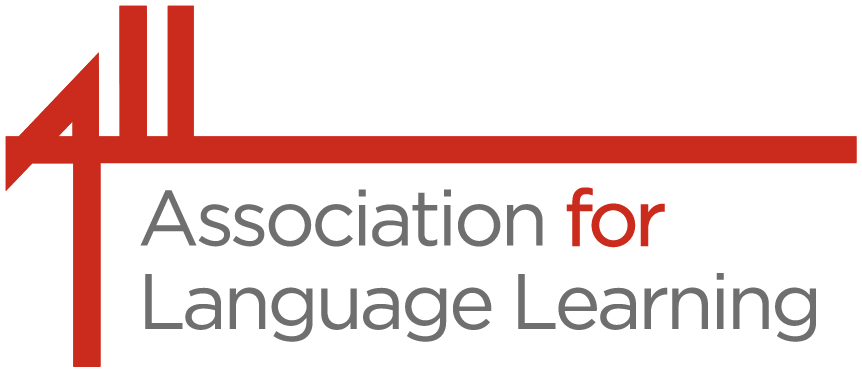Guest blog by Laura Simons, Second in Languages Faculty, Dylan Thomas Community School, Swansea, ALL Council Member and South Wales Network Lead
Being a learner of many languages over the years has meant that I have often looked for ways to memorise vocabulary. In this blog post I shall attempt to describe some strategies and tools that I use in my classroom to support the vocabulary acquisition of my students.
Whilst it is vitally important to understand the grammar as the building blocks for language, it is completely necessary to have knowledge of sufficient vocabulary to ensure that the learners are able to manipulate language with a certain degree of independence; with the new GCSEs in England and Wales, this is of significant importance.
One of my favourite strategies I use with my students is music to support their vocabulary learning. I do this by choosing a song which is as close to the topic that we are studying as possible and we carry out exercises linked to the lyrics, such as; find the missing word, identify the tense, and also using the song to practise their pronunciation. This also allows them to hear the word in a voice and accent other than mine. When using this strategy, I often remind my students that they will find themselves remembering the lyrics to songs of their least favourite artists after hearing the song multiple times on the radio or the Internet. The same method applies when listening to a song in the target language. Of course there are not always songs available for each topic that is covered but that allows the most creative of you to create your own song to practise vocabulary. This is also a fun activity for students, to re-write lyrics to songs for the topic that they are studying. An example of this was last year with the song ‘Pen Pineapple Apple Pen’ when I had been teaching my Year 7 the verb ‘tener’ with pencil case items. You could also use the tune of ‘Happy Birthday’ when learning about ages in Spanish. For example:
¿Cuántos años tienes? X2
¡Tengo … años!
¿Cuántos años tienes?
Lyricstraining.com is a good website for whole class gap fill or individual activities for students to use with lyrics and videos of an excellent variety of songs in the target language.
Another strategy for vocabulary embedding is to link the word with something familiar in the students’ own language or other languages that they know. An example of this is when introducing the phrase ‘yn olaf’ which means lastly in Welsh. I make the link to the snowman character in the Disney film Frozen and say that snowmen do not last long. This means that the students have a memory hook in their own language to help them to remember the new word in Welsh. In Wales, there are many language teachers who use Triple Literacy in the lessons, linking Spanish/French, Welsh and English. An example of this is the word pont which means bridge in both French and Welsh, or linking the word chanter or cantar with the word canu (to sing) in Welsh. It is also important to allow and to encourage students to have the opportunity to discover their own memory hooks for vocabulary in order to give them control over their own learning. Often, this has resulted in memory hooks that I have then used with subsequent classes!
Another strategy is to exploit the vocabulary in a variety of different ways and within different activities. Repetition in this way will help embed the vocabulary and the variety of activities will ensure that the students do not get bored, and therefore enjoy their learning. This should result in them then being able to apply the newly learnt vocabulary in a variety of different contexts. When introducing new vocabulary, it is important for students to practise not only reading the word and understanding it, but also writing the word and saying the word. This can be achieved through a variety of activities such as reading comprehension, find the Spanish for…, gap fill activities when reading or listening, or vocabulary games. When we look at L1 acquisition in our students, it is rare that we teach words without looking at their sounds and phonetics, so we should bear this in mind when endeavouring to further our students’ L2 (or more!) acquisition. Moreover, children learn their L1 through constant repetition and reinforcement, so we should never assume that just because we have set the vocabulary for a test and they have scored full marks, they have truly learnt the vocabulary. We need to ensure that we revisit it in a variety of different contexts and different activities several times to ensure that the vocabulary is truly embedded. Revisiting vocabulary is also vital, not only to consolidate learning but also to active prior knowledge at a later date in the students’ language learning journey.
Word roots and families are also important. The success of this as a teaching method has been evident in my current post, where Spanish is taught using a grammatical rather than thematic approach. As primary languages is not currently compulsory in Wales, the majority of our Year 7s are starting Spanish from scratch. One of our first units of work is the verb tener, where the conjugation is taught, followed by the most common contexts that tener is used for in Spanish, such as age, family, description and to describe some feelings. This focus and repetition of the verb enables the students to have a sound grasp of the verb and its most common uses by the end of the unit. As previously mentioned, the repetition of this practice will ensure that these conjugations and word families are embedded and able to be accessed with greater ease by the language student as they progress on learning the language.
There are many programs and websites that are available to support MFL teachers and students with memorising vocabulary in an alternative medium to teacher/student. Some of my personal favourites are Quizlet, Memrise and Textivate; each allowing you to add your own vocabulary specific to the lesson or topic that you are teaching, and offering a multitude of options to help students to practise and to memorise that vocabulary. In addition, there are platforms such as Duolingo for Schools that supplement the core classroom activities and strategies required for vocabulary acquisition, through the repetition of core vocabulary in a wide variety of different contexts.
To conclude, there is no magic method that is guaranteed to give students the ability to retain vocabulary. What is important is that students are given a variety of methods and strategies which involve revisiting the vocabulary in different ways in order to help them in their language learning journey.
If you have an idea to share, please get in touch via email at [email protected]

